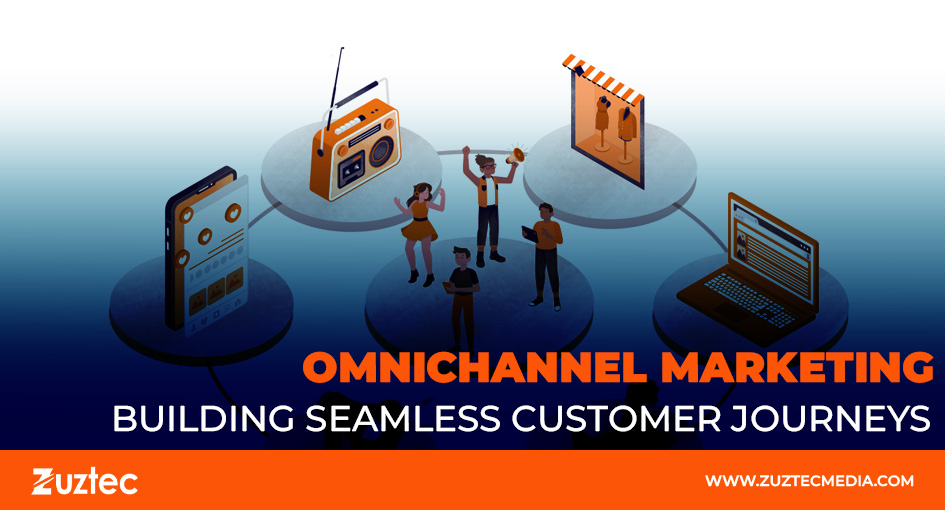
Omnichannel Marketing: Building Seamless Customer Journeys
The digital landscape has evolved dramatically over the past decade. As consumers shift between devices, platforms, and channels with ease, businesses are expected to keep pace—offering consistent, personalized, and responsive experiences every step of the way. Enter omnichannel marketing, a strategy designed to unify and synchronize interactions across all touchpoints, ensuring customers feel seen, heard, and valued no matter where they engage.
Gone are the days when email, social media, and brick-and-mortar stores operated in silos. Today’s customers move fluidly from mobile apps to websites to in-store visits—sometimes all in a single purchase cycle. Without a coherent marketing approach that ties these threads together, businesses risk confusion, lost sales, and damaged loyalty. Omnichannel isn’t just a buzzword—it’s an essential foundation for building trust and driving long-term customer engagement in a hyperconnected world.
Understanding the Power of Omnichannel Marketing
At its core, omnichannel marketing is a strategic approach that integrates all available customer communication channels—online and offline—into a unified brand experience. Whether a customer browses your website on their phone, interacts with your social media content, or visits your physical store, the experience should feel seamless, consistent, and interconnected.
This strategy goes beyond simply having a presence on multiple platforms. It requires these platforms to work in harmony. For example, a customer who adds an item to their cart on a mobile app should be able to view or purchase that same item from a desktop site later. If they’ve spoken to a chatbot, the customer support team should have access to that conversation.
Multichannel vs. Omnichannel: What’s the Difference?
While the terms are sometimes used interchangeably, multichannel and omnichannel approaches are not the same. Multichannel marketing involves using various platforms to engage customers—think emails, social posts, and display ads—but these channels typically operate independently. Omnichannel marketing, on the other hand, connects these dots, creating a cohesive journey rather than isolated touchpoints.
Building Blocks of a Successful Omnichannel Strategy
Unified Customer Data
Effective omnichannel marketing relies heavily on data. A centralized database or Customer Data Platform (CDP) is crucial for gathering information from every channel—purchase history, browsing behavior, email engagement, support tickets—and combining it into a single customer profile. This enables brands to personalize communication at scale.
For example, if a returning customer has consistently bought skincare products, your next email campaign could highlight new arrivals in that category. And if they browse your site without purchasing, a well-timed retargeting ad could remind them of what they left behind. This level of personalization enhances relevance and builds brand loyalty.
Seamless Technology Integration
Behind every seamless experience is a tech stack working in perfect sync. Integration between CRMs, email platforms, chatbots, inventory systems, and analytics tools is essential. This connectivity ensures that data flows smoothly, enabling marketers to make informed decisions and deliver timely, relevant messaging across all channels.
A standout example is Starbucks, whose loyalty app links mobile payments, in-store purchases, and rewards. Whether a customer orders from their phone or walks into a café, their experience is consistent—and their points are always up to date.
Consistent Brand Voice
Maintaining a unified tone and message across platforms builds trust. Whether customers read a blog post, interact with a Twitter response, or watch a YouTube video, the brand’s voice should feel familiar. This consistency reinforces identity and assures customers that they’re engaging with the same brand, no matter the medium.
Consider Apple’s branding: minimalist, sleek, and product-focused. Every email, billboard, store layout, and social media post aligns with this aesthetic. That harmony is a textbook example of omnichannel communication done right.
Omnichannel in Action: Industry Use Cases
Retail and E-Commerce
Retail is perhaps the most prominent sector embracing omnichannel. Shoppers often research products online before buying in-store (and vice versa), making a cohesive journey essential. Click-and-collect services, online inventory checks, and personalized recommendations based on both online and offline purchases all contribute to a robust omnichannel approach.
A shopper might browse sneakers on a brand’s website, receive an SMS notification about a flash sale, visit a nearby store to try them on, and ultimately complete the purchase via mobile app. This interconnected path builds convenience and trust.
Healthcare
In healthcare, omnichannel efforts can improve both patient engagement and outcomes. Appointment reminders, test result notifications, telehealth consultations, and prescription refills can be streamlined across SMS, apps, email, and portals. For patients juggling multiple health concerns, a connected experience is more than a luxury—it’s a necessity.
Hospitals and clinics that use patient data to deliver personalized health content and check-ins show patients that they’re more than just a file number. This human-centered approach helps foster trust and encourages ongoing care.
Financial Services
Banks and fintech companies use omnichannel strategies to provide secure, streamlined service across branches, mobile apps, call centers, and ATMs. Whether a customer wants to open an account, dispute a charge, or apply for a loan, they should be able to start the process on one channel and continue it on another—without redundancy.
Chatbots that seamlessly escalate to live agents, apps that mirror account activities shown on websites, and consistent fraud alerts across email and SMS all help enhance customer confidence in financial institutions.
Eventually, in an age where customers expect everything—speed, personalization, consistency—omnichannel marketing is the strategy that delivers it all. It bridges the gap between online and offline, merges tech with empathy, and creates experiences that feel tailor-made for every individual.
As customer expectations continue to evolve, brands that invest in omnichannel infrastructure, data integration, and cohesive messaging will stand out in a noisy marketplace. This strategy doesn’t just improve engagement—it builds relationships that last, transforming one-time buyers into loyal brand advocates.

